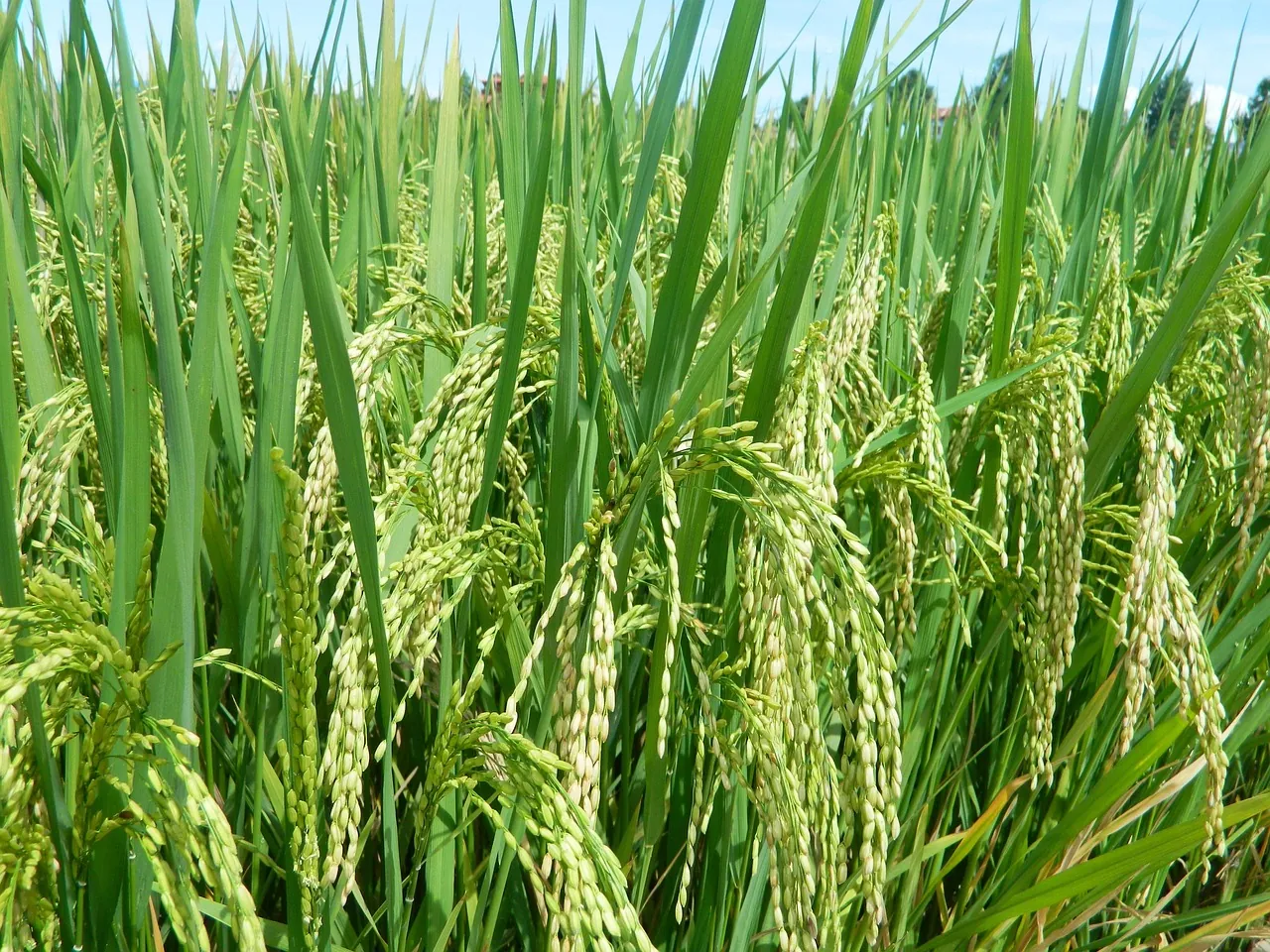Win a Free Trip to Japan!
Experience cherry blossoms and ancient temples
If you’ve ever wondered what makes the best Japanese rice truly stand out, you’re in for a treat. Renowned for its perfect texture and delightful flavor, Japanese rice elevates any dish from ordinary to extraordinary. Whether you’re a cooking novice or a seasoned foodie, discovering the nuances of the best Japanese rice can transform your meals and impress your guests. So, let’s dive into this ultimate guide and unlock the secrets behind these irresistible grains that have captured the hearts of food lovers worldwide!
Why Japanese Rice Stands Out from the Rest
When it comes to rice, Japanese rice truly holds a special place in the culinary world—and for good reason! The best Japanese rice is celebrated not just for its taste but also for its unique qualities that make it stand out from other rice varieties worldwide.
So, what makes Japanese rice so exceptional?
- Premium Quality and Texture: Japanese rice typically comes in short or medium grains, which become sticky and tender when cooked. This stickiness is perfect for eating with chopsticks and is the hallmark of sushi and many traditional dishes.
- Distinct Flavor Profile: Unlike long-grain rice varieties, Japanese rice offers a mild, slightly sweet flavor that complements a wide range of dishes without overpowering them.
- Meticulous Cultivation Practices: Japan’s rice farmers use time-honored techniques combined with innovative agricultural practices, resulting in consistently high-quality grains that meet strict standards.
- Versatility in Cooking: Whether it’s sushi, onigiri, or just a simple bowl of steamed rice, the best Japanese rice adapts beautifully to numerous cooking styles, making it a kitchen staple in Japanese households and beyond.
To give you a quick comparison:
| Feature | Japanese Rice | Other Common Rice Varieties |
|---|---|---|
| Grain Length | Short to Medium | Often long or medium |
| Texture when cooked | Sticky and tender | Fluffy and separate |
| Flavor | Mild, slightly sweet | Varies, often neutral |
| Primary Use | Sushi, everyday meals | Pilafs, salads, biryanis |
In essence, the best Japanese rice isn’t just about nourishment—it’s about delivering an authentic experience with every bite, making it truly stand out from the rest!

The Most Popular Varieties of Japanese Rice You Must Try
When it comes to savoring the best Japanese rice, exploring the most popular varieties is key to understanding what makes this staple so special. Each type offers a unique flavor profile and texture, perfect for different dishes and occasions. Here are the top varieties you definitely should try:
1. Koshihikari
- Texture: Sticky and slightly firm
- Flavor: Sweet, nutty, with a rich umami taste
- Best for: Sushi, onigiri (rice balls), and everyday meals
Koshihikari is often celebrated as the gold standard of Japanese rice, prized for its perfect balance of stickiness and chewiness.
2. Sasanishiki
- Texture: Soft but less sticky than Koshihikari
- Flavor: Mild and clean
- Best for: Bento boxes and health-conscious dishes
This variety shines with its light texture, making it ideal for those who prefer less clumping rice without sacrificing flavor.
3. Akitakomachi
- Texture: Slightly sticky and tender
- Flavor: Sweet with a subtle aroma
- Best for: Hot rice dishes and rice bowls
Akitakomachi boasts a harmonious texture that works beautifully in warm meals, enhancing the overall dish.
4. Hitomebore
- Texture: Soft and sticky
- Flavor: Sweet with mild fragrance
- Best for: Traditional Japanese meals and sushi
Its name means “love at first sight,” highlighting how quickly people fall for its delicate flavor and texture.
| Variety | Texture | Flavor Profile | Ideal Uses |
|---|---|---|---|
| Koshihikari | Sticky, firm | Sweet, umami | Sushi, onigiri |
| Sasanishiki | Soft, less sticky | Mild, clean | Bento, healthy dishes |
| Akitakomachi | Slightly sticky | Sweet, aromatic | Hot rice dishes, rice bowls |
| Hitomebore | Soft, sticky | Sweet, fragrant | Traditional meals, sushi |
Trying these varieties lets you discover the versatile world of Japanese rice, ensuring you pick the best Japanese rice for every recipe and occasion!
How to Choose the Perfect Japanese Rice for Your Recipes
Choosing the best Japanese rice for your culinary creations might seem tricky, but it’s simpler than you think! Whether you’re making sushi, donburi, or a comforting bowl of steamed rice, picking the right variety elevates your dish instantly.
Here’s a quick guide to help you find your perfect match:
| Rice Type | Texture | Best For | Flavor Profile |
|---|---|---|---|
| Koshihikari | Sticky & Soft | Sushi, Rice Balls | Sweet, Umami-rich |
| Sasanishiki | Light & Fluffy | Everyday meals | Mild, Slightly Nutty |
| Akita Komachi | Chewy & Firm | Bento, Onigiri | Rich, Robust |
| Hitomebore | Plump & Moist | Rice Bowls, Side Dishes | Smooth, Subtle |
Tips to choose the best Japanese rice:
- Consider your recipe: Sticky rice like Koshihikari works wonders for sushi, while fluffier Sasanishiki is perfect for daily meals.
- Texture matters: Do you prefer your rice sticky or light? This will heavily influence your choice.
- Flavor is key: Japanese rice offers subtle sweetness and umami; pick a variety that complements your dish’s seasoning.
- Authenticity counts: Always opt for rice labeled as “Japanese” or from known Japanese regions to get genuine flavor.
By understanding these factors, you’ll soon discover that the best Japanese rice isn’t just about a name—it’s about matching the right grain to your favorite recipes to make every bite truly irresistible!
The Secret Behind the Irresistible Flavor and Texture
When it comes to the best Japanese rice, its globally loved flavor and texture aren’t just by chance—they’re the result of careful cultivation and unique processing techniques. So, what exactly makes Japanese rice stand out with that perfect balance of stickiness, softness, and subtle sweetness?
Key Factors That Create Its Unique Taste:
- Short-grain Variety: Japanese rice is primarily short-grain, known for its plump, round kernels. This shape allows rice to absorb just the right amount of water during cooking, resulting in that signature sticky, yet tender texture.
- High Amylopectin Content: One of the secrets lies in the starch structure. Japanese rice contains higher levels of amylopectin, a type of starch that makes grains cling together while maintaining softness.
- Polishing Process: Authentic rice undergoes thorough polishing, removing outer husks and bran layers to bring out a clean, mild flavor with a slightly nutty aroma.
- Water Quality: Japanese rice is often grown using pure, mineral-rich water, which subtly enhances the rice’s natural sweetness and mouthfeel.
- Traditional Cultivation: Farmers carefully harvest rice at the perfect maturity, ensuring optimal moisture content and flavor development.
Quick Comparison of Key Qualities:
| Aspect | Best Japanese Rice | Other Rice Varieties |
|---|---|---|
| Grain Length | Short | Long or medium |
| Stickiness | High (pleasantly sticky) | Low to medium |
| Flavor Profile | Mild, subtly sweet | Earthier or bland |
| Cooking Texture | Soft, plump, chewy | Fluffier or dry |
In essence, the best Japanese rice owes its irresistible charm to these combined elements, making every bite a delightful culinary experience. Whether you’re crafting sushi or a comforting donburi bowl, understanding this secret will elevate your meals every time!

Cooking Tips to Get the Best Out of Your Japanese Rice
To truly enjoy the best Japanese rice, mastering the cooking process is key. Japanese rice is beloved for its perfect balance of stickiness and fluffiness, but it requires a little care to reach its full potential. Here are some friendly, easy tips to help you shine in the kitchen:
1. Rinse Thoroughly:
Before cooking, rinse your rice under cold water until the water runs clear. This removes excess starch and keeps the grains from becoming gummy.
2. Soak for Flavor:
Soak the rinsed rice for about 30 minutes. This step allows the grains to absorb water evenly, resulting in a softer, more tender texture.
3. Perfect Water Ratio:
Use roughly a 1:1.1 or 1:1.2 rice-to-water ratio (cups). A little extra water creates that characteristic stickiness without turning mushy.
| Method | Rice-to-Water Ratio | Notes |
|---|---|---|
| Stove Top | 1:1.1 | Requires monitoring |
| Rice Cooker | Follow device guide | Most foolproof and consistent |
4. Let it Rest:
Once cooked, let the rice rest with the lid on for 10 minutes. This helps steam redistribute, giving a more fluffy and cohesive finish.
5. Fluff Gently:
Use a rice paddle or fork to fluff the rice carefully. This separates grains without smashing them.
By following these tips, you’ll bring out the unique deliciousness of the best Japanese rice, making every meal memorable!
Pairing Japanese Rice with Your Favorite Dishes
When it comes to enjoying the best Japanese rice, pairing it with the right dishes can elevate your meal to a whole new level. Japanese rice, known for its sticky yet fluffy texture and subtly sweet flavor, acts as the perfect canvas to complement a wide variety of foods. Here’s how you can pair it perfectly!
Why Pairing Matters
Japanese rice’s unique texture absorbs flavors beautifully, making it versatile enough to be paired with both traditional and modern dishes. Whether you’re indulging in sushi or savoring a hearty donburi bowl, the right rice enhances the overall experience.
Top Pairing Ideas
- Sushi and Sashimi: The classic pairing—use premium, short-grain Japanese rice to hold sushi rolls together and balance fresh fish’s delicate flavors.
- Tempura: Crispy, fried tempura finds its perfect match in fluffy rice, which soaks up the light soy-based tentsuyu dipping sauce beautifully.
- Teriyaki Dishes: Sweet and savory teriyaki chicken or beef pairs wonderfully with the mild, slightly sweet taste of the best Japanese rice.
- Rice Bowls (Donburi): From gyudon to oyakodon, hearty toppings paired with sticky rice create a comforting and satisfying meal.
- Vegetable-Based Meals: Lightly seasoned or steamed vegetables shine when paired with Japanese rice, showcasing a balanced and healthy plate.
Quick Comparison Table
| Dish Type | Ideal Japanese Rice Characteristic | Why It Works |
|---|---|---|
| Sushi | Sticky, short-grain | Holds shape, enhances fresh flavors |
| Tempura | Fluffy yet sticky | Balances crispiness and absorbs sauce |
| Teriyaki | Mildly sweet, sticky | Compliments sweet-savory taste |
| Donburi | Firm, sticky | Supports hearty toppings |
| Veggie dishes | Lightly sticky, delicate flavor | Highlights freshness without overpowering |
With these pairing tips, you can make the most of the best Japanese rice in your kitchen. Happy cooking!
Where to Buy Authentic Japanese Rice: Tips and Tricks
Finding the best Japanese rice can feel like a treasure hunt, but don’t worry—we’ve got you covered with practical tips to help you track down authentic grains that will elevate your meals.
Shop at Specialty Asian or Japanese Markets
Start by exploring local Asian supermarkets or Japanese grocery stores. These stores often carry premium varieties like Koshihikari or Sasanishiki, known for their sticky, flavorful texture. Staff there can also guide you to the freshest options.
Online Retailers: Convenience Meets Quality
If you don’t have easy access to physical stores, numerous online retailers specialize in authentic Japanese rice. Just remember to:
- Check customer reviews for feedback on quality and freshness.
- Look for sellers that specify the rice’s origin in Japan.
- Choose reputable brands to ensure authenticity.
Farmer’s Markets and Direct Importers
Sometimes, you can find vendors who import rice directly from Japan at farmer’s markets or specialty food fairs. Buying here not only supports small businesses but often ensures the rice is fresh and genuine.
What to Watch Out For
- Avoid buying bulk rice from generic supermarkets that don’t specify type or origin—they may not offer the best Japanese rice.
- Packaging should ideally be airtight to preserve freshness.
- Look for rice harvested in the most recent season to ensure optimum flavor.
With these tips, you’ll be well on your way to enjoying the authentic taste and texture of premium Japanese rice every time!

Health Benefits of Enjoying Japanese Rice Regularly
When it comes to choosing the best Japanese rice, it’s not just about taste and texture—this rice offers impressive health benefits, too! Regularly enjoying Japanese rice can be a smart and nourishing addition to your diet.
Firstly, Japanese rice is typically short-grain and polished, which means it’s easy to digest and gentle on the stomach, making it perfect for people with sensitive digestion. Plus, it provides a steady release of energy thanks to its balanced carbohydrate content, helping you stay active and focused throughout the day.
Here are some standout health perks of the best Japanese rice:
- Low in fat and cholesterol: Ideal for heart health.
- Rich in essential vitamins and minerals: Contains B vitamins and magnesium that support metabolism and muscle function.
- Good source of antioxidants: Helps combat oxidative stress.
- Gluten-free: Perfect for those with gluten sensitivities or celiac disease.
| Benefit | Description | Why It Matters |
|---|---|---|
| Easy Digestion | Polished, short-grain rice | Gentle on your stomach |
| Sustained Energy | Balanced carbs | Keeps your energy steady |
| Heart Health Support | Low in fat and cholesterol | Protects against cardiovascular issues |
| Nutrient-Rich | Contains vitamins B, magnesium, antioxidants | Supports overall well-being |
In summary, incorporating the best Japanese rice into your meals offers more than just a delicious base—it’s a nourishing choice that supports a healthy lifestyle with every bite! So, go ahead, treat your taste buds and your body alike.
Exploring Regional Japanese Rice and Their Unique Qualities
When it comes to the best Japanese rice, the secret often lies in its region of origin. Each area in Japan offers rice varieties with distinct flavors, textures, and aromas shaped by unique climates, soil, and cultivation methods. Let’s dive into some notable regions and what makes their rice stand out:
| Region | Rice Variety | Unique Qualities |
|---|---|---|
| Niigata | Koshihikari | Renowned for its perfect balance of sweetness and firmness. Fluffy grains with a glossy finish. |
| Akita | Akitakomachi | Exceptionally sticky, making it ideal for sushi. Offers a mild, slightly sweet flavor. |
| Miyagi | Sasanishiki | Delicate texture with a subtle aroma. Perfect for everyday meals. |
| Fukui | Hitomebore | Soft yet resilient grains with a rich, sweet taste. |
Why does region matter? The cool climate of Niigata contributes to slower rice maturation, resulting in more starch accumulation and the best Japanese rice texture. In contrast, the humid environment of Akita emphasizes stickiness, preferred in many traditional Japanese dishes.
If you want to elevate your meal, experimenting with rice from different regions can be a game-changer. Whether you seek the fluffiness for donburi or the stickiness for sushi, the diversity in regional Japanese rice allows you to match the perfect grain to your recipe—unlocking a whole new level of flavor and satisfaction!
Storing and Handling Japanese Rice Like a Pro
To enjoy the best Japanese rice, proper storage and handling make all the difference. After all, even the finest grains can lose their charm if not treated right. Here’s how you can keep your rice fresh, flavorful, and ready for your next meal.
Storage Tips:
- Keep it cool and dry: Store your rice in an airtight container to protect it from moisture and pests. A pantry or cupboard away from direct sunlight works perfectly.
- Use the fridge or freezer for the long haul: If you buy Japanese rice in bulk, consider refrigerating or freezing it to maintain freshness. Just bring it back to room temperature before cooking.
- Avoid strong odors: Rice easily absorbs smells, so keep it away from spices and strong-smelling foods.
Handling Tips:
- Rinse before cooking: Washing the rice gently removes excess starch, enhancing the texture and flavor.
- Measure water carefully: The water-to-rice ratio is crucial. Typically, use about 1.1 to 1.2 times the volume of rice in water to get that signature sticky and fluffy texture.
- Store cooked rice properly: Let it cool quickly, then refrigerate in a sealed container for up to 3-4 days.
| Storage Method | Ideal Conditions | Shelf Life |
|---|---|---|
| Pantry | Airtight container, dry, cool | 6-12 months |
| Refrigerator | Airtight container | Up to 1 year |
| Freezer | Airtight, moisture-proof bag | Up to 2 years |
By mastering these simple storage and handling tricks, you’ll always have the best Japanese rice at your fingertips—delicious, fresh, and ready to elevate any dish!

Frequently Asked Questions
What are the key characteristics of the best Japanese rice?
The best Japanese rice typically has a glossy appearance, a sticky and slightly chewy texture, and a naturally sweet aroma and flavor. This type of rice is usually short-grain or medium-grain, perfect for sushi and traditional Japanese dishes. Its high-quality starch content makes it tender yet firm, allowing it to hold its shape well when cooked, which is essential for achieving authentic taste and texture.
How should I cook Japanese rice to get the best flavor and texture?
To cook Japanese rice perfectly, rinse the grains thoroughly under cold water until the water runs clear to remove excess starch. Use a rice cooker or pot with a tight-fitting lid, and add the right amount of water, usually a 1:1 ratio for short-grain rice. Let the rice soak for about 30 minutes before cooking, then cook on low heat and allow it to steam afterward. This method ensures the rice turns out fluffy, sticky, and full of natural flavor.
What are the most popular varieties of Japanese rice?
Some of the most popular Japanese rice varieties include Koshihikari, Sasanishiki, and Akitakomachi. Koshihikari is renowned for its superior taste, aroma, and texture, making it a top choice for sushi. Sasanishiki is known for its slightly firmer texture and is perfect for everyday meals. Akitakomachi offers a perfect balance of sweetness and stickiness, ideal for those seeking a classic Japanese rice experience.
Can Japanese rice be used in non-Japanese dishes?
Absolutely! While Japanese rice is traditionally favored in sushi and Japanese cuisine, its sticky texture and subtle sweetness make it an excellent choice for various dishes beyond Japanese cooking. It works wonderfully in rice bowls, stir-fries, salads, and even desserts like rice pudding. Its versatility adds a delightful texture and flavor boost to many culinary creations around the world.
Where can I buy authentic Japanese rice?
Authentic Japanese rice can be found at specialty Asian grocery stores, Japanese markets, or online retailers that focus on high-quality ingredients. When buying, look for rice labeled with the variety name, origin (Japan), and check for freshness. Trusted brands often provide detailed information about harvesting and milling dates to ensure you get the freshest, most flavorful rice for your cooking adventures.
